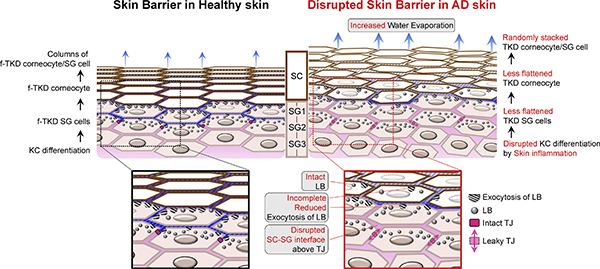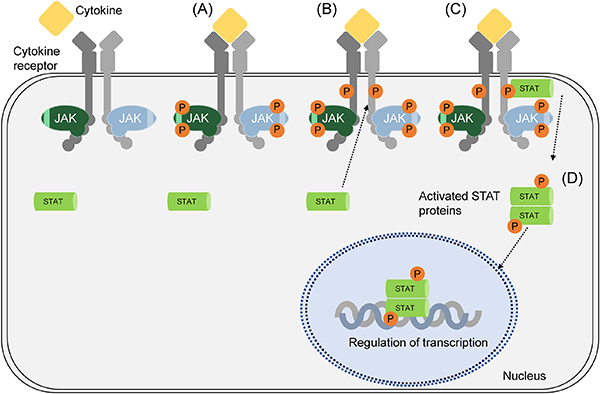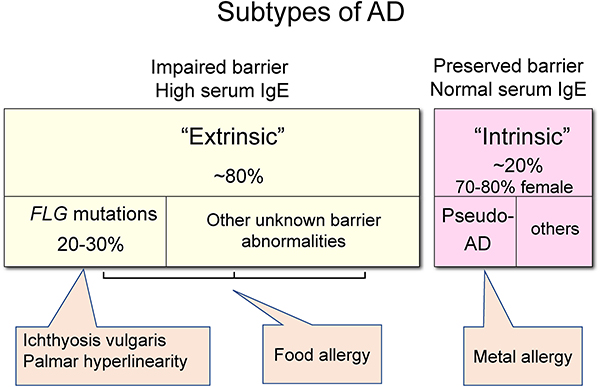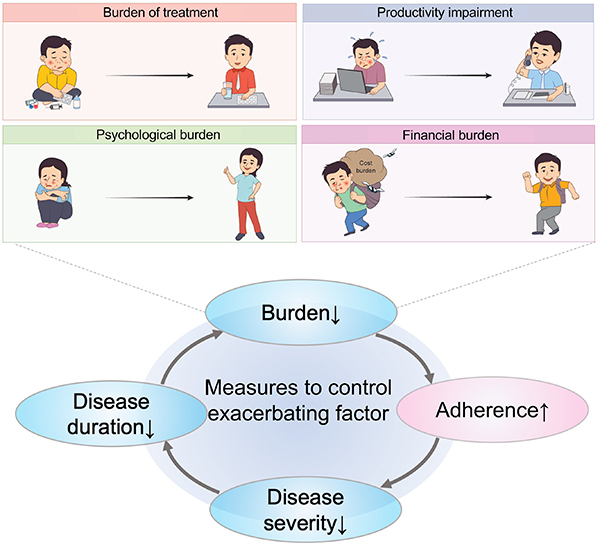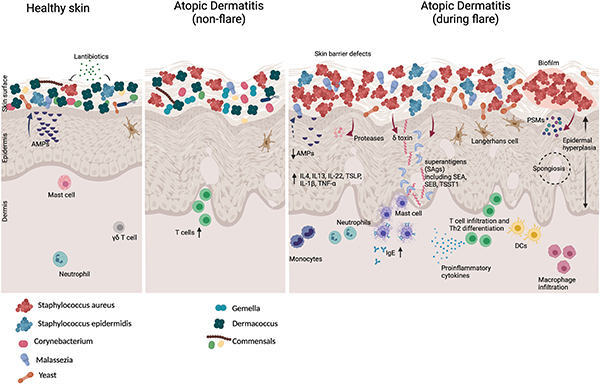Volume 71, Issue 1 (January 2022)
Review Series: Five Topics to Face the New Era of Atopic Dermatitis
For many years, AD has been regarded as a mysterious disease, as its name suggests. But in recent years its true nature has been gradually revealed. One breakthrough has been the identification of mutations in filaggrin, FLG. Because filaggrin is a molecule that acts as a natural moisturizing factor, this fact reminds us of the importance of barrier function in AD. In this issue, Yoshida et al. further state that the impaired skin barrier function in affected and non-affected areas of AD may be explained by a number of abnormalities found in the stratum corneum and granular layer of the epidermis.
We have planned a comprehensive review of AD from five different perspectives. In addition to the reviews by Yoshida et al. offering an overview of key barrier defects in AD and of Nakashima et al. about JAK inhibitors which have recently become available in clinical practice, Tokura and Hayano discuss the subtypes of AD. They classify AD into two subtypes: an exogenous subtype with high IgE levels and an endogenous subtype with normal IgE levels. The former has skin barrier dysfunction with high filaggrin mutations and is the major subtype of AD, whereas the latter accounts for about 20% of AD, is predominantly seen in females, and has a high frequency of metal allergy. AD subtypes in European-Americans and Asians have also been proposed. Murota et al. describe the exacerbating factors and disease burden in patients with AD. One of the characteristics of AD is its prolonged clinical course, resulting in an increased burden of AD, including disruption of work, reduced daily activities, increased direct medical costs, fatigue, and daytime sleepiness. Typical aggravating factors of AD include irritant dermatitis and food allergies in children as well as sweating and psychological stress in adults. Koh et al. have prepared a fascinating review on the skin microbiome. The skin of AD patients is characterized by decreased microbial diversity and an excess of pathogenic Staphylococcus aureus. On the other hand, it has been reported that microorganisms modulate host responses through communication with keratinocytes, specialized immune cells, and adipocytes, resulting in improved skin health and barrier function.



